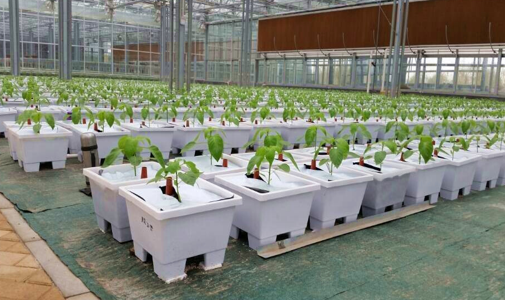Building A Sustainable Future: The Benefits Of Polycarbonate Sheet Greenhouses
1. Introduction to Polycarbonate Sheet Greenhouses
In recent years, the demand for sustainable agricultural practices has surged, prompting the need for advanced greenhouse solutions. Among the most innovative options available today are **polycarbonate sheet greenhouses**. These structures not only enhance plant growth but also contribute significantly to environmental conservation. This article explores the manifold benefits of polycarbonate sheet greenhouses, highlighting their role in building a sustainable future for agriculture.
2. What Are Polycarbonate Sheets?
**Polycarbonate sheets** are versatile, thermoplastic materials renowned for their strength and durability. Unlike traditional glass, polycarbonate is virtually unbreakable and significantly lighter, making it an ideal choice for greenhouse construction. With a range of thicknesses and types, including twin-wall and multi-wall options, polycarbonate sheets provide excellent insulation while allowing for optimal light transmission.

3. Advantages of Polycarbonate Sheet Greenhouses
Polycarbonate sheet greenhouses offer several advantages that make them a preferred choice among modern farmers and gardening enthusiasts.
3.1 Energy Efficiency
Polycarbonate greenhouses are designed with energy efficiency in mind. Their **insulated properties** significantly reduce heat loss during colder months, minimizing the need for supplemental heating. This energy efficiency not only cuts costs but also aligns with eco-friendly practices.
3.2 Durability and Longevity
The durability of polycarbonate sheets is unmatched. They can withstand extreme weather conditions, including hail, high winds, and heavy snow loads. Unlike glass, polycarbonate is less prone to breakage, ensuring that your greenhouse remains intact and functional for many years. This longevity translates to **lower replacement costs** and reduced environmental impact due to fewer materials needing to be discarded.
3.3 Light Transmission and Plant Growth
Light is crucial for plant growth, and polycarbonate sheets excel in this department. They allow for up to 90% light transmission, ensuring that plants receive the necessary sunlight for photosynthesis. Moreover, the diffused light provided by polycarbonate sheets reduces hotspots and shadows, promoting even growth across all plants within the greenhouse.
3.4 Insulation Properties
Polycarbonate's exceptional insulation properties help maintain stable temperatures inside the greenhouse. This temperature stability is vital for promoting healthy plant development, particularly in regions with fluctuating weather patterns. The insulation helps keep the greenhouse warm in the winter and cool in the summer, creating an ideal environment for year-round cultivation.
4. Sustainability and Eco-Friendliness
Sustainability is at the core of polycarbonate sheet greenhouse design. These structures contribute to the reduction of carbon footprints by utilizing energy-efficient materials and systems. Their longevity means fewer resources are consumed over time, aligning well with sustainable farming practices. By choosing polycarbonate greenhouses, farmers can actively participate in the global movement towards eco-friendly solutions in agriculture.
5. Cost-Effectiveness of Polycarbonate Greenhouses
Investing in a polycarbonate greenhouse may initially require a larger upfront expenditure compared to traditional greenhouses. However, the long-term savings are substantial. Reduced energy costs, lower maintenance costs, and increased crop yields all contribute to the overall cost-effectiveness of polycarbonate greenhouses. Farmers can enjoy a quicker return on investment due to the enhanced productivity these structures facilitate.
6. Maintenance and Care for Polycarbonate Sheet Greenhouses
Keeping a polycarbonate greenhouse in peak condition is relatively straightforward. Regular maintenance involves cleaning the sheets to ensure maximum light transmission and checking for any structural issues. Polycarbonate is resistant to UV degradation, which means that, with proper care, the sheets will remain effective for years without significant wear.
7. Real-World Case Studies: Success Stories
Several farmers have successfully transitioned to polycarbonate greenhouses, yielding impressive results. Case studies reveal that crop productivity can increase by as much as 30% with the adoption of these structures. Additionally, farmers report reduced energy costs and improved resilience against extreme weather events. These success stories serve as compelling evidence of the benefits that polycarbonate greenhouses offer.
Polycarbonate sheet greenhouses represent a significant advancement in sustainable agricultural practices. Their numerous benefits, including energy efficiency, durability, cost-effectiveness, and environmental sustainability, make them an invaluable asset for modern farmers. As we work towards a greener future, investing in polycarbonate greenhouses is not just a practical choice, but a visionary step in redefining agriculture. By embracing these innovative structures, we can cultivate not only healthier crops but also a healthier planet.

评论
发表评论